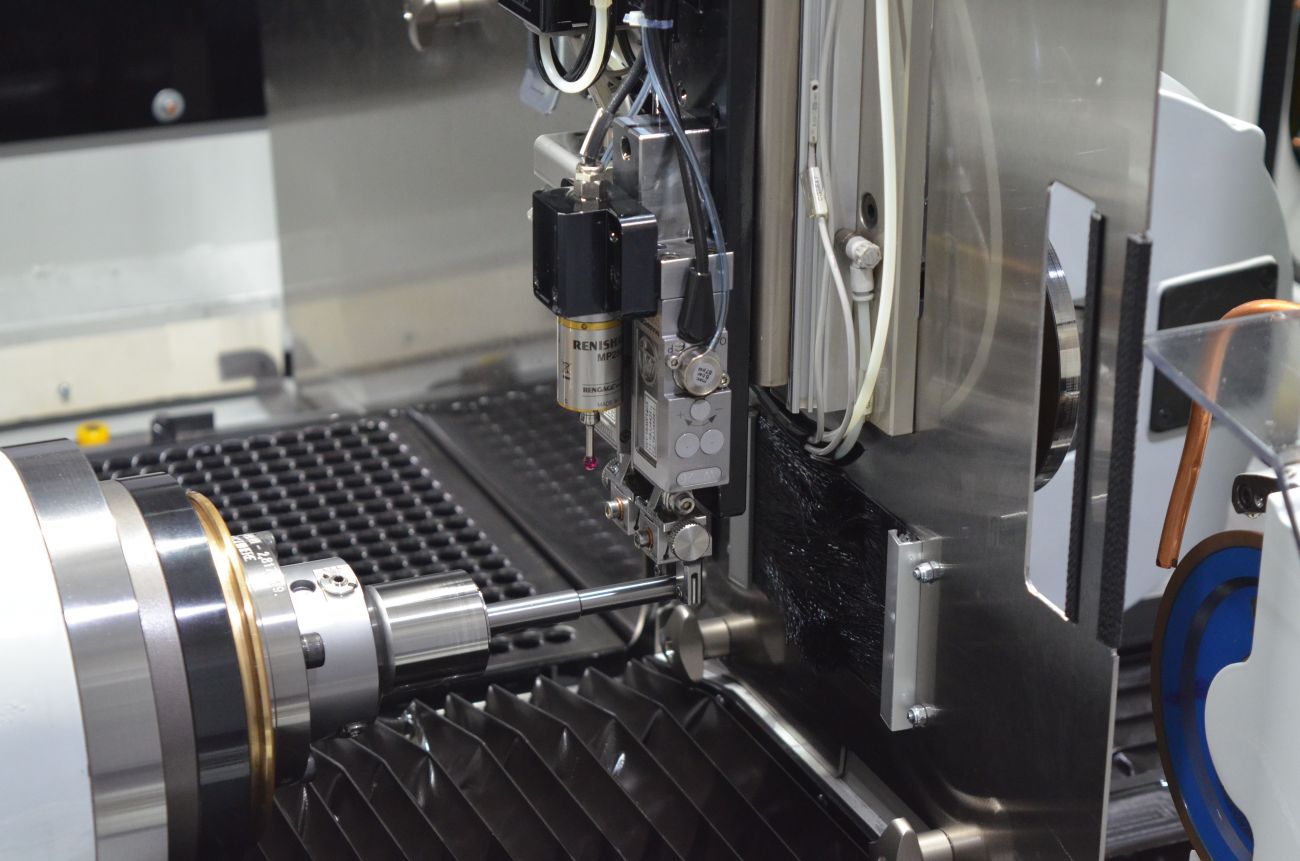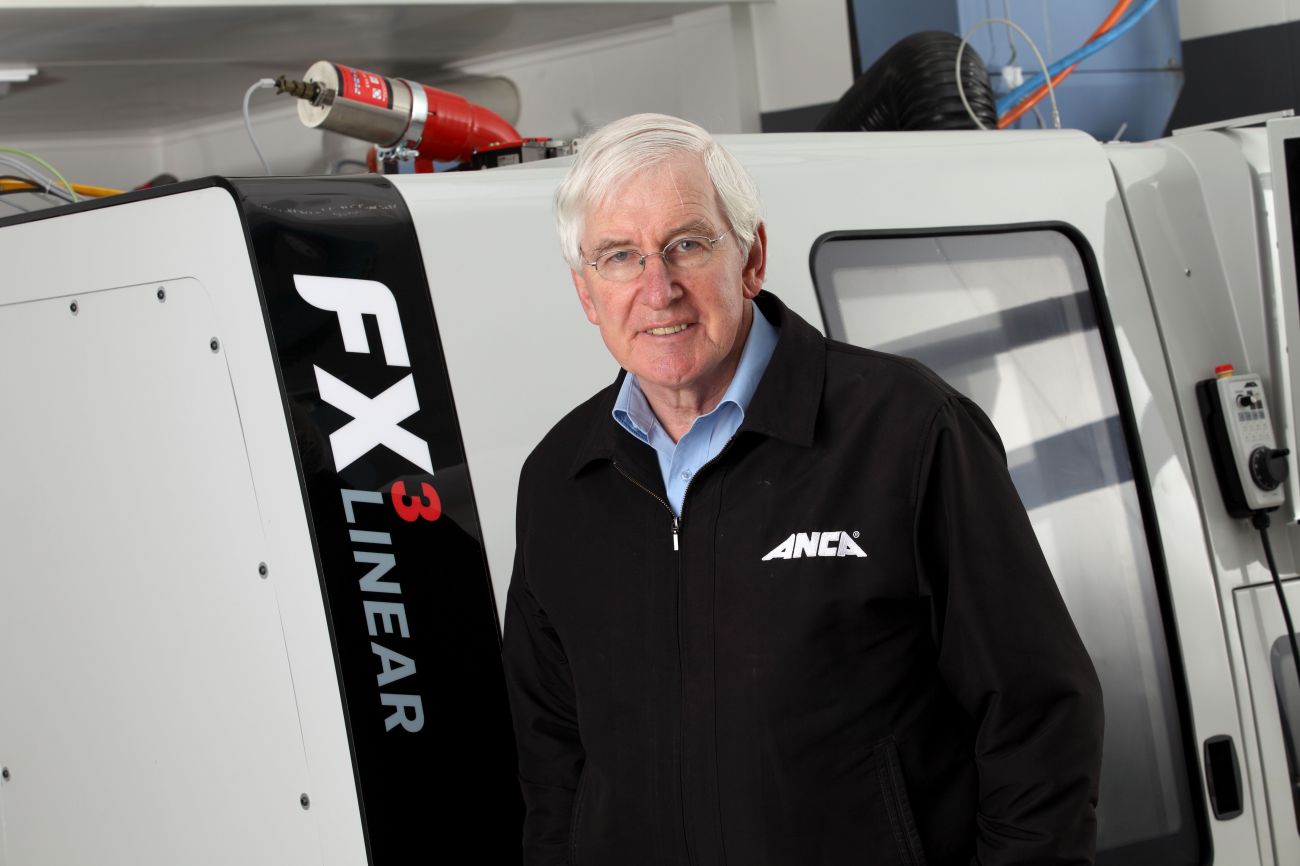ANCA to Display Technology Range to Help Manufacturers Stay Agile at GrindingHub 2022

Melbourne, Australia – Transforming through innovation with ANCA’s AIMS: The future factory is efficient, automated, and operational 24 hours a day, seven days a week. To maximize efficiency, it employs modular programs, scripts, remote access, and cutting-edge machines.
The CNC machining industry thrives on innovation. Grinding machines, cutting tools, and software are constantly improving in terms of efficiency, flexibility, accuracy, and automation. ANCA pursues customer requirements to identify the next challenge to solve, iterating and refining its technology in the process. Over its more than 40 years of operation, developments that were once considered cutting-edge have become standard practice — even at ANCA, given and how revolutionary its early products felt.
“We can recall a time when it was almost impossible to resharpen cutting tools on a CNC machine. That was until 1986, when ANCA launched our TG4, the first machine in the world to automate the measurement of tool geometry and regrinding through probing,” said Pat Boland, Co-Founder and Joint Managing Director, ANCA. “Or when we introduced System 32, which, for the first time, applied advanced robotic software to tool grinding, which enabled significant opportunities, for example, the soft axis or soft machine kinematics, which simplified the grinding of cutting tools. We’ve come a long way, from probing for cutting tools, leading the competition in five-axis grinding or from simulating grinding processes before grinding with the CIM3D.”

“Designing the best technology requires a multi-pronged approach. We immerse ourselves in the market; are continually inventing; keep a keen eye on new developments; and bring them into our applications. We seek out intelligent, talented people, and interact with customers daily to understand their specific needs. This is how we design and manufacture our market-leading solutions,” he further stated.
The company will showcase its technology range at GrindingHub in a newly designed stand that enables customers to increase capacity, improve profit margins, and gain efficiencies. Choosing which technology to invest in should be driven by business objectives and work with existing objectives, processes, data, and ideas.
Launching CPX in-process OD measurement system
The CPX in-process OD measurement system is a quality control system that monitors and controls the OD of ground blanks during batch production. Batch grinding with high material removal rates and tight tolerances on a CPX is a basic function of the machine. However, the OD measurement system takes it a step further by utilizing the Statistical Process Control (SPC) feature that comes standard with the OD measurement software. SPC is defined by the user, and the tolerances, as well as the Cp and CpK values, are constantly monitored, controlled, and reported to the user.
The OD measurement system is permanently mounted inside the machine and is only called upon when necessary. An accurate in-process measurement and compensation is applied to maintain the blank OD at the nominal diameter based on the set tolerances and frequency of measurement. The system is flexible, allowing it to handle multiple diameters in a single setup, making it ideal for complex blank geometries/shapes and longer batch runs.
AIMS
ANCA’s Integrated Manufacturing System (AIMS) is the future of optimized cutting tool production through streamlined manufacturing and connectivity. Customers can achieve continuous, unattended production with ANCA and AIMS, which dramatically reduces non-productive machine time with smart automation that connects sequential tool production processes and provides connectivity across the entire factory.
This is what Industry 4.0 is all about: factory-wide integration. The technology views a factory as a single machine, rather than separating it into many different elements of design, blank preparation, grinding, laser marking, washing, packing, and shipment. This is a powerful concept that brings together one ecosystem and structures them to be as efficient as possible. As AIMS is a modular solution, it can be deployed in stages, allowing for an easy, gradual, and smooth transition from traditional to automated and integrated manufacturing. An AIMS manufacturing cell will be on display at GrindingHub, demonstrating a fully automatic tool manufacturing process that begins with a pallet of blanks and ends with a pallet of ground tools.
The GrindingHub demo is made up of the following elements:
- AutoSet – preparation station, it is the main operator interface. Jobs that have been scheduled for production are downloaded through the AIMS Server to the AutoSet station and are prepared for production here, pallets are being loaded with blanks for further automatic process
- AutoFetch – AMR (Autonomous Mobile Robot) responsible for material transfer between processes, replacing operators carrying pallets or individual tools between machines/processes. The AutoFetch robot will transfer full pallets with blanks to the respective grinder, pick up an individual tool from a grinder for out-of-process measurement and compensation, and then pick up a pallet of finished tools and transfer it to the Finished Goods area
- MX7 Linear grinder is equipped with an AutoLine Advanced loader (Robomate 2 loader with AIMS kit installed), capable of accepting pallets presented by the AutoFetch
- Zoller Genius with Zoller AutoLine Advanced in charge of out-of-process measurement of individual tools from a batch being manufactured. Measurement values are transferred to the respective grinder, and grinding parameters are compensated based on individual customers’ tolerance settings.
ANCA’S automatic laser marking station: AutoMarkX
AutoMarkX is an automatic stand-alone laser marking station that replaces manual and labor-intensive processes. It is AIMS Ready, which means it can be used as a stand-alone machine but can also be easily integrated into the customers’ lights-out, unmanned AIMS manufacturing cell with automatic pallet transfer using the AutoFetch robot. The AutoMarkX eliminates the need for manual laser marking, which is a repetitive and labor-intensive task that could be automated, saving customers money. Tool quality is protected by avoiding manual handling, which eliminates the risk of chipping.
AutoMarkX accepts up to two full pallets of tools, allowing the user to mark a large batch of tools unmanned. Flexible marking means that the message can be etched on a single side of the shank, opposite sides of the shank, or at the end of the tool. The last option is especially useful for applications that require a unique tool identification code (such as Datamatrix) to be etched on the tool. Datamatrix codes, for example, are typically etched on the shank, where they are vulnerable to excessive surface wear, rendering them unreadable. To overcome this issue, the best place to etch this type of code is at the tool’s end.
Automated small-batch and regrinding solution and insert grinding demonstrations
ANCA understands the need to continually reduce costs within production processes, which is especially difficult in smaller production batches of complex tools and in the regrinding process. To address this issue, ANCA has developed a flexible solution that incorporates RFID technology, the LaserUltra closed loop measurement system, and a barcode reader interfaced into iGrind and the end-customer’s ERP system. The FX7 Linear platform will be used to demonstrate this system. The demonstration will show how to set up a tool for regrind with a barcode reader and QR code, how to easily make adjustments within ANCA software, what inputs are possible in an ERP system, how to set up the RFID to allow mixed diameter automation, and the actual grinding process. The Pop-Up Steady, AutoStick, Auto Wheel Qualification, and iView features will also be available on the FX7 Linear machine.
The standalone MX7 Linear with RoboMate loader will demonstrate ANCA’s solution for grinding and auto loading of indexable inserts. Workholding, grippers, pallets, and an interchange station will be installed on the machine and loader specifically for the production of special inserts. The 4-station Auto Stick, Auto Wheel Qualification, and LaserUltra are among the accessories fitted to the machine.
Gear up for skiving with GCX Linear
Demand for skiving cutters has increased by 30 percent year on year, owing to the electrification of the automotive industry and the general rise of e-mobility. The GCX Linear offers customers a complete solution for entering this rapidly growing market, including the ability to produce skiving cutters, shaper cutters, and regrinding of hobs. It provides advanced stand-alone software for designing and optimizing the tool, which is neatly interfaced with the gear tool package within ANCA’s renowned ToolRoom software. The machine is designed for accuracy, with features such as axes with LinX linear motors and an enhanced headstock. GCX Linear also added a number of technologies, including AEMS dressing, MTC on the grinding spindle and dresser spindle, integrated gear tool measurement, and direct compensation, which set a new standard for producing skiving tools with the highest DIN AA quality class.
Due to the novelty of the skiving tool, many gear measurement machines still lack the correct mathematical model for evaluating the cutter’s quality. Leading the world in solving the quality control issue, ANCA developed the world’s first integrated gear tool measurement system, which enables the grinding-measuring-compensation all done in the machine, as the only practical closed-loop solution.
The GCX Linear will be on display at GrindingHub, demonstrating the skiving cutter production process, which will be aided by the industry’s first integrated gear tool measurement system.
New ToolRoom RN35
Visitors will be able to see demonstrations of ANCA’s industry-leading ToolRoom and CIM3D software, as well as a special preview of the upcoming RN35 release. ToolRoom RN35 is focused on productivity and cycle time improvements, especially machine running costs. New process optimization features aid in the reduction of cycle time, resulting in better quality tools and wheel life. This includes an automated reduction in air grinding time and gap calculations based on tool simulation models.
Among the significant improvements are:
- Feedrate optimization – Integration of Q-Prime feature in ToolRoom software to achieve a constant Material Removal Rate (MRR) based on the specifications of the wheel manufacturer. This is accomplished by calculating and controlling non-constant feedrate where applicable in order to achieve better cycle time and extended wheel life.
- Airtime Reduction – Automated reduction in airtime by optimizing gaps based on tool simulation models and wheel shapes.
- Statistical Process Control (SPC) – Gives control of users’ production processes during high volume manufacturing by monitoring the variations due to wheel wear and other process-controlled activities. Process capability data can be graphically displayed or stored for future QC or further evaluation. It also enables customers to control critical tool dimensions like diameter by updating wheels at regular intervals.
- Profile Fluting – Gives the ability to control and maintain a hook/rake angle along the trajectory of the cutting edge on a given profile. It improves cutting performance and the life of the tool due to the uniform hook/rake angle along the edge.
Image Source: ANCA



 Facebook
Facebook.png) Twitter
Twitter Linkedin
Linkedin Subscribe
Subscribe